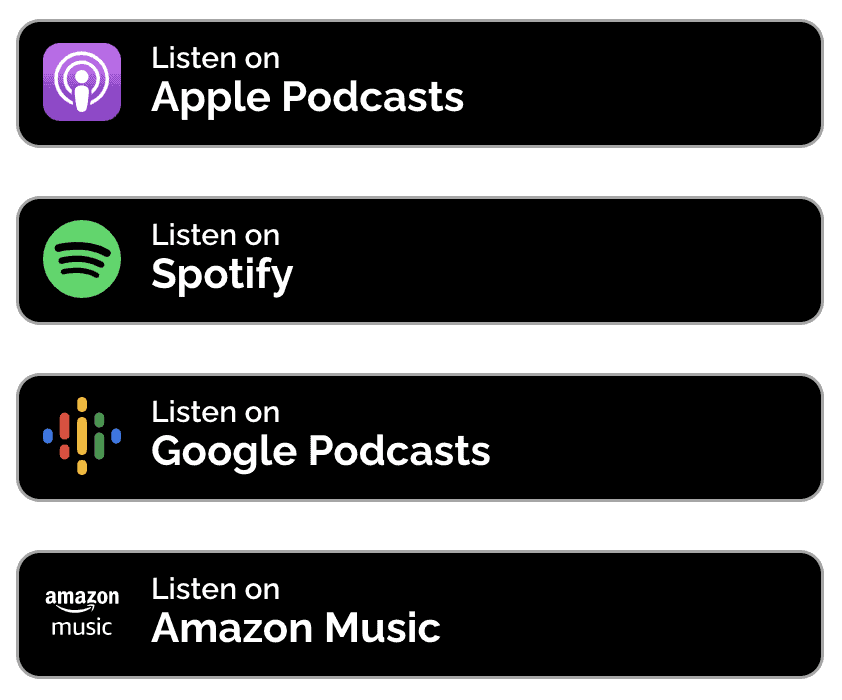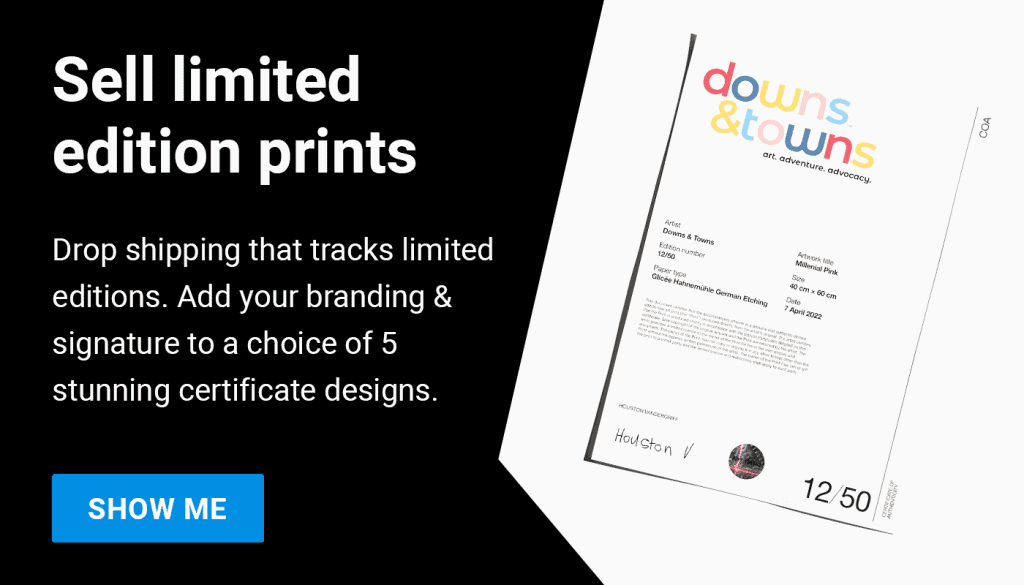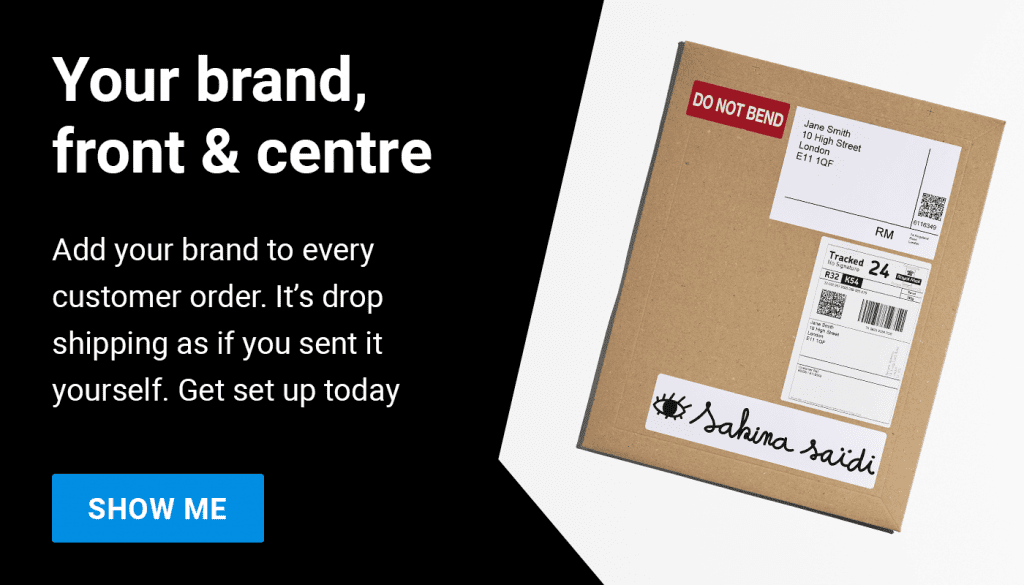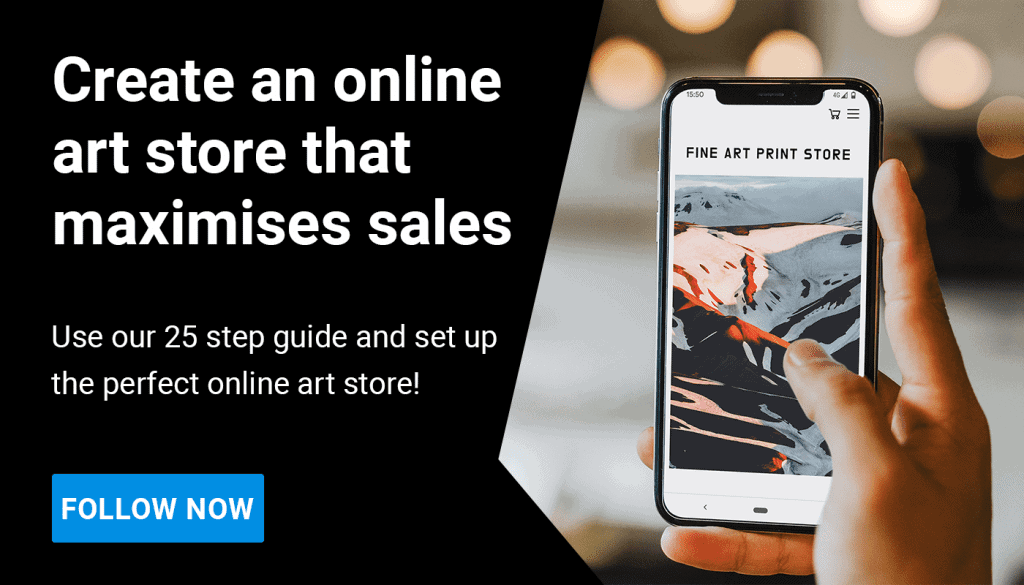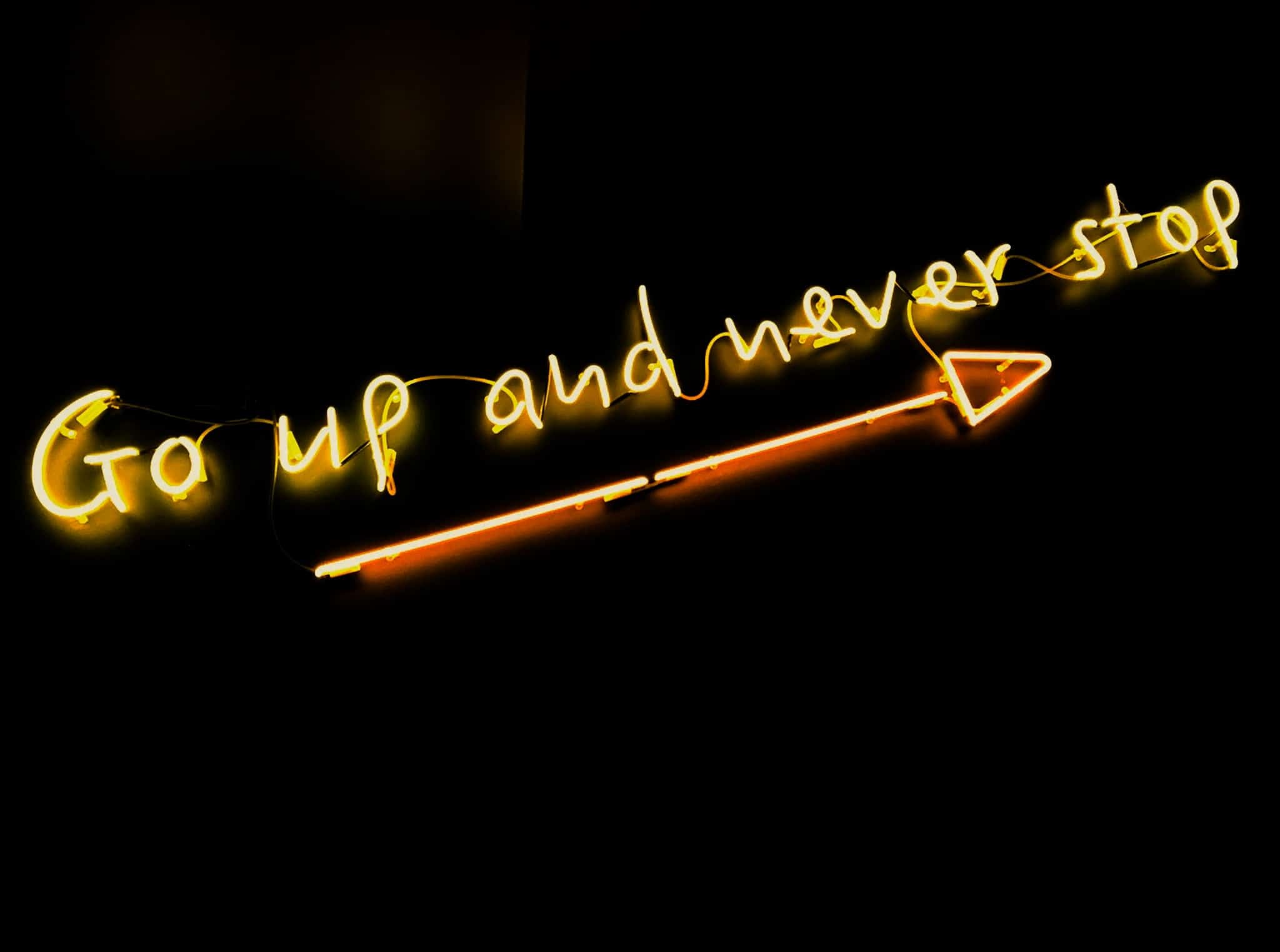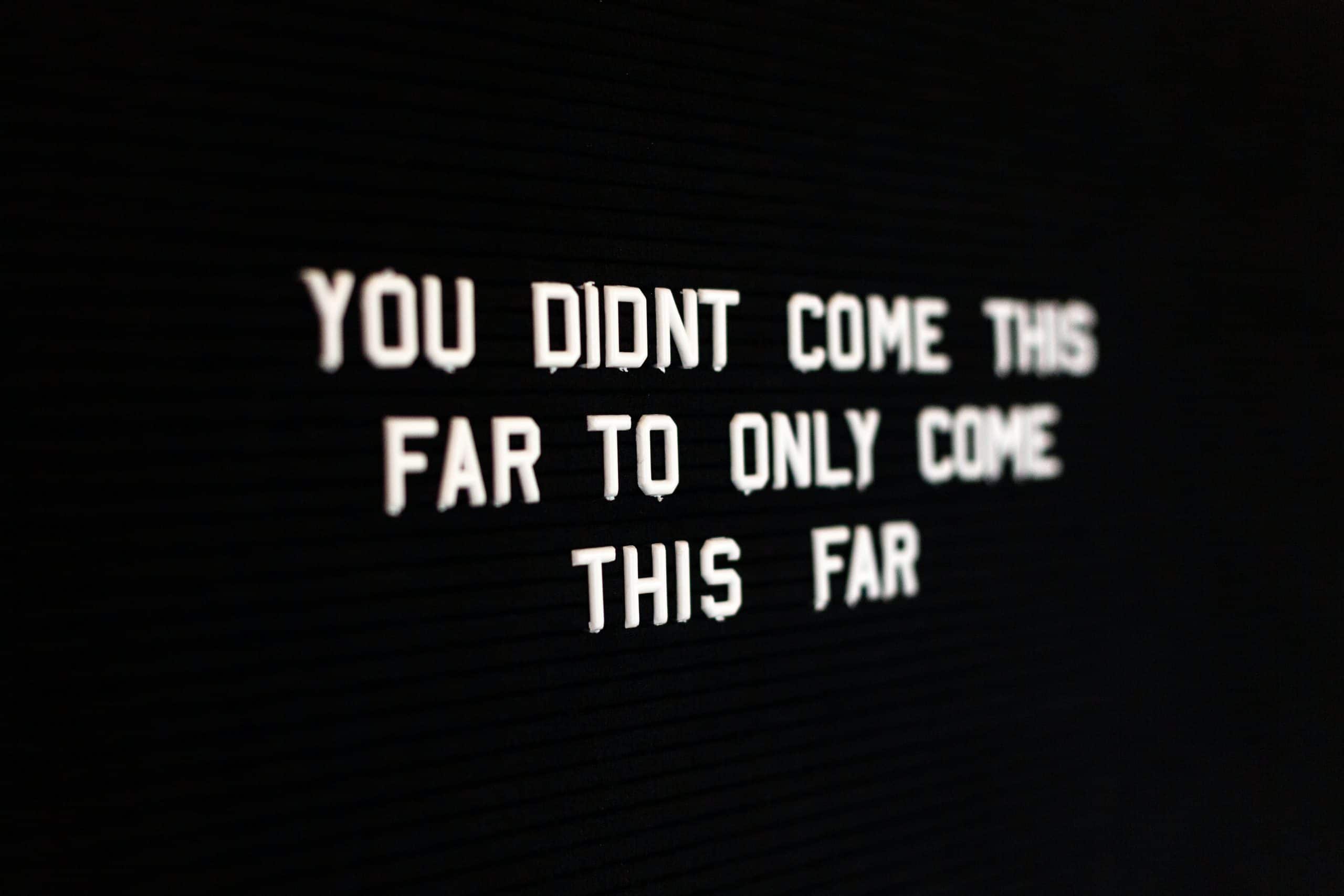Listen to this episode with Katy wherever you get your podcasts:
Katy Cowan is a serial entrepreneur who built a successful PR company before going on to found Creative Boom, the renowned creative industry platform delivering news, inspiration and insight to 7 million creatives a year.
Stuart Waplington, founder of theprintspace, had a fantastic chat with Katy about PR and how artists can get featured in the media. Katy tells us the ways in which the PR industry has been revolutionised over the years and also gives some easy to follow tips for artists to work on their PR process. Listen to the podcast above or scroll down for the key learnings & transcript.
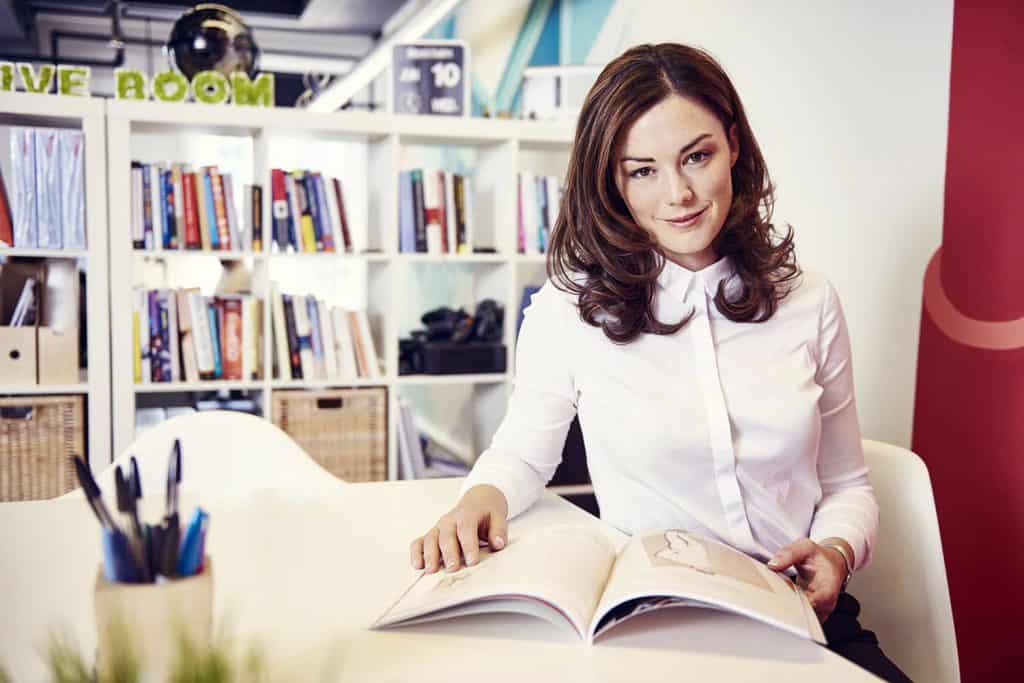
Key Takeaways
10:14 – Seize your opportunities
“I call it my Don Draper moment. I was in a meeting with a client and they were talking about something and I just looked out the window and I just thought, what am I doing? So it’s actually taken me a long time to get to this point where I’ve gone, right, okay, I just need to go for it.”
17:36 – Secret to getting published in the media
“That’s the secret that a lot of creatives don’t realise. If they know how to do PR and they do it well, then they have a better chance of getting featured than anyone else. Their work might not be that great. But if they’ve done that part really well and provided a ton of information that the journalist can then turn into a story, then they’ve got such a great chance of getting that promotion.”
19:02 – If you have a story, that is the key
“Find a news hook that’s interesting, so if you have done something inspiring with a logo or bespoke typography. Whatever it is, pick that out and make it the main angle of your story and then write it as you would see on platforms like Creative Boom”
28:38 – Building your own community
“We knew we couldn’t rely on social media platforms to build a community. It was always on the ethos that we have to build our own platform, build our own community. We did that via the website, content and newsletter. And it’s done us very proud considering the algorithms have undoubtedly changed. You are never really in control of your brand when it’s in someone else’s space. Because of that, most of our traffic is organic or direct!”
37:15 – Dealing with social media and its changing algorithms
“I have seen a lot of creatives who have relied on Instagram see their engagement drop off overnight, and they’re figuring out what to do next. Some are talking about TikTok, others are starting a newsletter, or a blog on their website. I think if we’re talking about self promotion, if you concentrate on building your own content on your site, and when I say that I mean have a blog that isn’t on a subdomain, every-time you create a post you’re telling Google, hey crawl me, i’m important. Every time you do this, imagine you are sat in a fishing boat and each post is like putting in another line to catch the fish.”
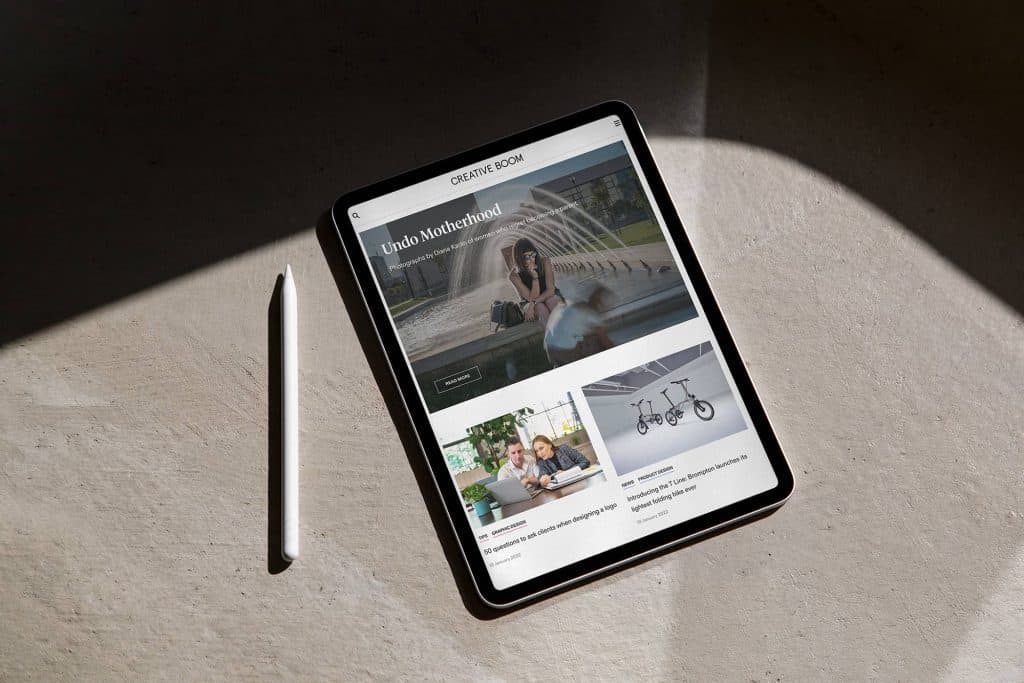
Transcript
Stuart: Let’s start off by asking you how you came to be doing Creative Boom? Were you in the creative industry before that and you decided to write about it? How did it come about?
Katy: It was quite an interesting start really. It was 2009, and the global economic crisis had happened and I’d been freelancing and had lost all of my clients overnight because they were all in the property sector. So that was a bit of bad luck. I learned a very valuable lesson, not to stay in one sector right there.
Anyway, I had one client left and I was on honeymoon and I was sort of, you know, doing the usual thing us creative people do, which is not to relax and always come up with ideas when, you know, you’re lying on your sun lounger. And I just thought, I’ve been chatting to so many of my friends who are artists and designers, because they’re so much more interesting than I am because I was working in PR and marketing at the time. Everybody was struggling. Nobody knew how to really promote themselves. So I thought, right, well, I’m a journalist by trade and I’ve got all this experience in PR. I know what I’ll do. I’ll start a little blog or a magazine and I’ll call it Creative Boom, because I want to create an industry boom for the creative industries. And it’s something I’m really interested in. I love design and art. That’ll be really fun. That’ll keep me going during these dark times. So that’s what I essentially did.
I turned to my husband and said, we’re gonna start a blog. I’m gonna call it Creative Boom. Can we sort that out when we get home? My husband’s a software developer, he said, sure. I’ll get you up and running on WordPress. There’s a Theme called Forest you can use and we’ll get you going. I said, okay, cool. He said, right, you can relax now.
When we got home, I started this little side thing and it was very very simple back then. It was a case of sharing people’s work. Reaching out to my friends on Twitter and saying, I’ve started a blog. I’m hoping it’ll help boost your profile or give you a bit of SEO. I was dabbling in SEO as well. That was 13 years ago and now it’s my full-time venture. I just can’t quite believe that I’m here doing this as my full-time job!
So to answer your question, was I in the creative industry? Sort of. I was in the marketing world. But really it came from a passion to want to do something fun, give back and yeah, dig myself and my friends out of what was a difficult time.
Stuart: At what point did it become a full-time professional venture?
Katy: Oh gosh! It was in early 2021 actually. Because during those 13 years I also started a PR and digital communications agency with my husband and we built it up and had staff and all the usual, the office and it was doing really well. But my heart was never really in it. I found that as I grew the PR agency I had changed. I was gravitating more of love and passion towards Creative Boom, but I never had the time. The dream was one day to maybe transition to running the platform full time.
So the pandemic happened. Things started to change. I think I just sort of thought, what am I doing? It had been a couple of years that I could do Creative Boom full time, but I just was very frightened of letting go of a business that had done me proud for a very long time. You know that feeling we get when we’re like, gosh, that would be a big change. That feels a bit scary. I’ll just keep things safe and do this, but also do that. But then in 2021 a client that I was working for had a changeover internally and the new marketing chap came in and said; right, apparently you are looking after our PR. What we got planned for the year? I just looked out the window and I thought, do you know what? I’m gonna be honest with you, I’m moving in a new direction. And he was like, oh great, well, best of luck. And off I went.
In the meantime, the PR agency I’d built with my husband for 10 years had evolved slowly into a software systems and development agency, which is now what it does. And still has all the same clients which I’m really proud of. We’ve still got the same business, but it’s just evolved into something else.
So it was early 2021 really, classic pandemic. Oh, self-reflection, let’s just finally take the leap and go for it and see what can happen. And so it’s now been 18 months that I’ve been doing this full time and it’s just an absolute dream if I’m honest.
Stuart: Amazing! Do you feel like now that you can concentrate on Creative Boom full time, it has helped the growth of Creative Boom?
Katy: 100%. It’s flying! I like to say to people we’re in full on startup mode. It’s been going for 13 years, actually turns 13 this July, but it’s only really started to take off since I’ve been able to dedicate my full focus on it. And there’s a lesson there, isn’t there? If there’s an opportunity, you’ve gotta kind of go for it.
It’s been a whirlwind. When 2020 happened and a lot of people were on furlough, I’d never worked so hard in my life. It was one chapter after another, one step in front of another, you know, let’s solve that problem, let’s deal with this next thing. I mean, publishing is really difficult. I’ve gone from a journalist who started her career in radio in the early 2000s, when the digital revolution was disrupting our industry, when Google and Facebook were taking away all the advertising. I was encouraged by a former editor to go into PR because that’s where money was more reliable and jobs were still secure. So that’s exactly what I did. And actually the internet has been both a blessing and a curse to my career all the way through. It’s brought many kinds of shifts, but a huge amount of opportunity.
Stuart: That’s interesting and in fact I used to run a company in the commercial creative industry as well as theprintspace. In 2017, I had a moment very similar to yours, where I was in a room and people were high fiving over some content that we created for a mobile phone network. I just couldn’t get excited about it.
It made me think about Steve Jobs’ speech from his Stanford inauguration when he got his honorary degree. He said, if you wake up too many times thinking, why am I doing this, then go and do something different. Don’t live someone else’s life. Life’s too short. At this point he’d been diagnosed with cancer and so he had a really good reflective mindset. I just thought about that and I said, right I’m out.
Ever since then, I’ve focused on theprintspace full-time. When you do something day-in-day-out, and it’s the only thing you think about, you get to a level of understanding of what you’re trying to do that you just can’t do when you’re switching between different jobs.
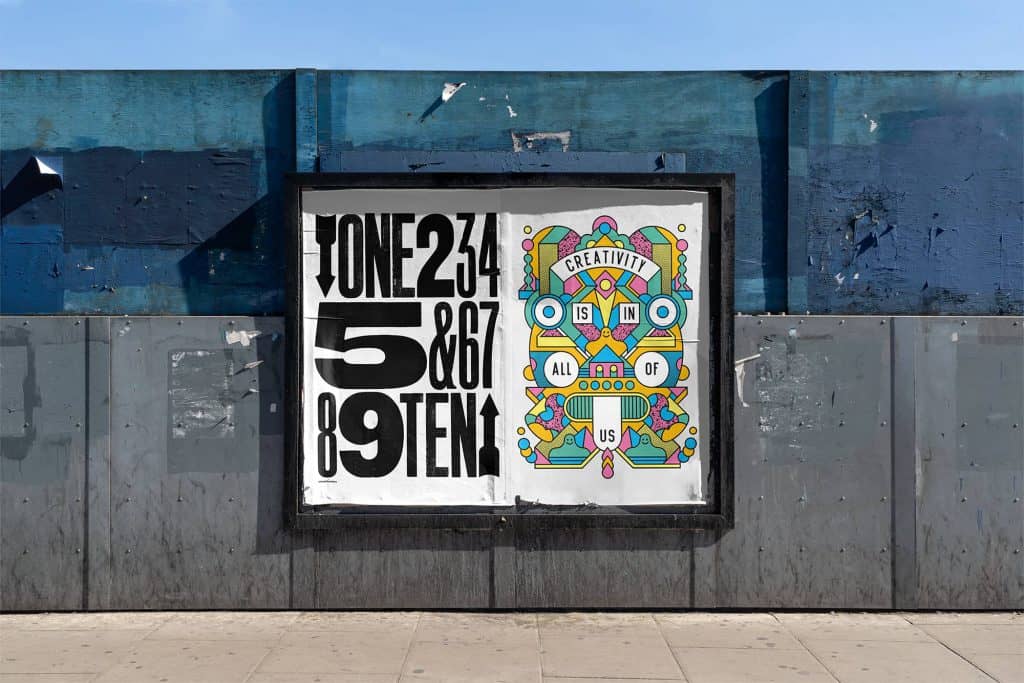
Katy: Yeah, you just can’t. It’s not possible. And I actually do have people ask me, how did you do it? And I’m like, I have no idea. But you know, it’s easy for me because I don’t have children on purpose. So I kind of work all the time. That’s my main focus. And I’m really passionate about growing businesses, but you’re right.
I call it my Don Draper moment. I was in a meeting with a client and they were talking about something and I just looked out the window and I just thought, what am I doing? So it’s actually taken me a long time to get to this point where I’ve gone, right, okay, I just need to go for it. And I guess it comes from when you’ve had a career that constantly has been disrupted and you’ve worried about redundancies left right and centre, and then you’ve gone freelance in your late twenties and been thrown into a world where you never know where the next job’s gonna come from. I think that stays with you for the rest of your life. You know, even if you have the capacity to go and do something full time, because it’s a success, you don’t wanna let something else go just in case.
You know, as I said before, it’s a really tough thing to do. So I feel very lucky that I’ve been able to do that in the last 18 months. And I’m just trying not to be too frustrated with myself for having not done it sooner.
Stuart: I know that feeling. When you’ve got two things going on you kind of feel you’ve got less risk, but in a strange way, somehow, you’re less likely to succeed to the level you want to with either of them.
I guess that kind of brings me on to your motivation for starting, which is something that I often find with creatives, is that you saw all these creative people and you thought, right, I need to give this amazing work an outlet to actually get some recognition and hopefully to grow careers.
I think that with creative people when it comes to the promotion and the self promotion side of things, it becomes a really different skill for them and quite difficult. So maybe for them as well, it’s also about that focus. Because you kind of have two jobs as a creative, whether you are a commercial creative or an artist, you’ve got to create the work and think about that. But at the same time, you’ve got to try and work out how to promote yourself, which in today’s world seems to be harder and harder. The tools have become so much more widely available. And there’s so many distractions. You are competing in so many ways to get noticed and that’s a completely different skill. Do you see that amongst creatives that they just don’t know where to start?
Katy: Definitely! And that was another reason why I started Creative Boom because one of our main sections, which has always been there I think from the very start, is a tips section. So there’s advice pieces in there about how to get featured in your favorite blogs and magazines, how to write a press release. I think there’s even a tips article from 2010 about how to give a good radio interview, that shows how old the thing is, but yeah, it’s really tough.
I think it’s especially difficult when you see the same big names getting fantastic publicity everywhere. Because that’s the way the machine works, doesn’t it? The magazines, if they feature a prominent designer, they know they’re gonna get clicks and so on and so forth. So that was another thing I wanted to do. I wanted to create a platform that included those big names absolutely, but was not so much part of that top of the ladder world and instead recognized the talent that was emerging (yes) but also the talent that was quiet and unassuming. Because there are so many fantastic artists and designers out there who are doing great work, but they never shout about it. And that can be for a number of reasons. They can have imposter syndrome. They might just find it a little bit egotistical. That’s some of the feedback I get from some designers. They don’t want to come across as showing off or brash. And then most of the time, the thing is, they don’t have the luxury of time.
They’ve launched a project. It’s going really well. The client’s happy. But they haven’t got the time or the resources to put together the visual materials to then go and approach journalists. They might well know how to do it, but they’re just very, very busy. And I think the pandemic has made a lot of people who were already running very fast, run a lot faster because everyone is terrified of it all going wrong. So we’re making sunshine, so to speak. It’s a combination of things. It’s complicated, but I hope that Creative Boom is a platform that can solve a few of those issues in whatever small way we can.
Stuart: How much time do you think a creative has to spend on the promotion side of things? For example, if someone submits work to Creative Boom, do they have to already have created all the materials like a press release, maybe a video of their work because video is becoming so much more important with social media platforms. How much time does it actually take them?
Katy: I’m not sure. It depends if they’re starting out and they haven’t done it before, it’s obviously gonna take some time to get their head around how the machine works. But once you know how it works, it should just be sort of a case of adding it to your workflow.
So you wrap up a project and you are obviously going to create some beautiful images to put on your portfolio or your website, or maybe share on your Instagram. Not that Instagram’s helping much anymore, but you know what I mean. And all they have to do is say, okay, I’ll add to that list, press. So figure out what the standard image size of most online publications is, which is where most creatives will want to get their work. Figure out what really good dimensions are for images. For example, graphic designers on their portfolio seem to have very low heighted images, which is great on their portfolio, because they’re lovely and wide as well, but on a magazine like Creative Boom they need to be higher. They just need to have a more standard landscape size and to get a good hint on what that might be. Go on one of the reputable stock image sites and see what their typical dimensions are for a stock image. And that’ll give you a good indicator of what journalists are looking for.
Look at your favorite design studios. Look at what they’ve published in your favorite magazine. See what details are provided. Essentially a journalist or editor’s job, they’re very busy and they get bombarded. If you provide them with everything they need right away, so they don’t need to do a lot of chasing, don’t have to go and do a lot of back and forth, don’t need to teach you how to submit your work for their news or for their inspiration section, then the more chance you have of getting featured. And that’s the thing, that’s the secret that a lot of creatives don’t realize. If they know how to do PR and they do it well, then they have a better chance of getting featured than anyone else. Their work might not be that great . But if they’ve done that part really well, and they know that the journalist wants, say six images of their work, maybe some MP4s and GIFs, in the right format, in the right dimensions, and provided a ton of information that the journalist can then turn into a story, then they’ve got such a great chance of getting that promotion.
Stuart: Is it something like writing about yourself in the third person? What else? How far does it go in terms of actually providing almost like a prebuilt article?
Katy: You can draft a press release. A press release is simply a statement of facts so you can write your latest say graphic design project as if it’s a news story. So you’d say: the printspace has unveiled a new brand identity for Creative Boom to celebrate the leading platform’s 13th anniversary. Or something like that.
Find a news hook that’s interesting. So you’ve done something really inspiring with the logo, or done some kind of bespoke typography. Whatever it is, pick that out and make that the main angle of your story, and then write it as you would see most of the stories on platforms like Creative Boom and have a practice.
I sat down with a friend of mine who’s a designer at Dotto Studio, Dani Molyneux, and was helping her with her website because I recommended an article, a tips article actually, that said every designer should have a press page or at least on their contact page. Some information for journalists. It can be something very simple like for press inquiries, please contact this email address or available for podcast recordings, I have a quality microphone, that kind of thing. And I was helping her create press packs. And once you’ve done one, you just start to really understand how you format each piece of work to appeal to a journalist. Now Dotto and a few of my other friends (it’s great to be able to help them!) have got these amazing press packs on their website and they’re flying.
The difference between some of these people that I helped prior to them knowing how to do all this compared to now – I mean, they’re in all the magazines now. I would reserve a couple of days to do some courses online, buy a book on PR, a relatively updated one and just get your head around how the system works because it’s just purely a system. It’s got nothing to do with how good you are. People are not gonna pick you to put you on their platform. If you’ve got a good story, that’s the key. So reserve the bigger projects, the ones with the really lovely visuals for submitting. Pick your battles, as they say. Choose the ones that you think will do well. But yeah, it’s something anyone can learn.
Stuart: I feel for a lot of creatives, being that strategic about how they go about promoting themselves kind of feels alien to them. They almost feel like they shouldn’t do it, and it somehow devalues their work or makes it style over substance or whatever.
As a creative, a designer and an artist, how should you feel about spending that time to promote yourself? Is it an absolute necessity? Because I think a lot of people look at really successful artists and say, well they didn’t do it, but then you never really know how they got successful in the first place.
Katy: I think doing your own self promotion is an important part of the process. It works. If you get featured in a magazine, people are gonna see your name and they’re gonna think, oh gosh, they’re doing really interesting things. And then you could be the person that they pick up the phone to and say, we’ve got this project, we’d love to have you come work on it.
There’s an entire PR industry worth billions that looks after brands for this purpose; to get people into magazines and editorial, and it’s even more difficult to do that than ever before. So if they can afford it, they can hire a freelance PR person to do this all for them and take the headache away. Or if they can really afford it, a PR agency. Photography always helps as well.
There are certain barriers for creatives who aren’t as flush as some of the more established names. Barriers to entry, like can they afford to get good photography of their products? For example, there’s a photographer, Holly Booth. She’s based in the Midlands and she does this amazing service for creatives who are selling products online, like posters, cards or stationery. You just pop them in the post and she takes pictures of them in her beautiful studio with props. She does the whole thing for you and then sends them back so that you can then put them on your shop and sell your products. So that’s one fantastic way of promoting yourself. Those same images could be used for news articles – ‘So and so has just launched a new print shop’
There’s so many ways that you can do your own PR without it being this big, scary, time consuming thing. It’s just one step at a time. And I would start very simply. Us creatives, we always know a photographer, don’t we? We’ve always got a friend who is hoping to build their portfolio. Is there a way that you can scratch each other’s backs and get some nice portrait shots of yourself done for pitching yourself to journalists? Could you spend a day learning how to write a press release? You’d be surprised how quickly you can pick these things up. Remember, the journalist needs a little bit of help.
I find loads of really talented people on Instagram. That’s how I approach people and say, I saw your work on Instagram. Would it be okay if we featured you? Could we do a little interview? So it’s not necessarily about pitching directly with press releases with a hey, I’m submitting my work, here’s my portfolio type thing. Journalists are scouring things like Twitter and LinkedIn, LinkedIn especially, my goodness. I get so many news stories from LinkedIn these days.
I think as a creative, if you are going to do your own marketing, you have to see it as part of your process. So when you wrap up a project, you have to then create the visuals that you need and the copy that you need to put it on your portfolio, on your social media profiles, and then submit it to your favorite magazines and just see it as part of the process and see what happens.
Stuart: So what kind of percentage of stories and projects that get featured on Creative Boom were via unsolicited submissions and what percentage did your team go out and find?
Katy: Because it’s now a full time thing, it’s changed enormously. I think we used to rely more on submissions than anything else. Now we’re constantly scouring. We’re keeping abreast of what’s happening in the industry. If we see something elsewhere that we haven’t covered, we may then approach that agency and get the information we need to write or to run and do some kind of profile or feature on that story. So it’s a combination: submissions, PR agencies sending in press releases who work on behalf of large design studios or artists, and then scouring things like Instagram and LinkedIn. It’s a busy busy day!
Stuart: I can imagine. Are you looking for more videos these days or what are you looking for? Are you looking for some kind of news angle or some topicality to it? Or are you just looking for an amazing piece of content about a project?
Katy: Well, we’re kind of evolving. We previously just had our main inspiration section so we would look for work, projects, new art series or photography series. And then we would write about them, critique them and talk about them in that way. In the last couple of years we’ve introduced a news section. We didn’t have a news section before because we just didn’t have the resources. It’s quite an overwhelming thing to have a news section. You have to keep on top of everything. So we now have news that’s coming out from the industry and that’s like award ceremonies and big launches, big exhibitions and huge rebranding projects.
The Magazine has really come on in the last couple of years. It’s a massive combination of content when I think about it. We also have lots of different features. We do interviews, we have insight pieces from the industry to figure out what’s happening, what people are thinking, opinion pieces, that kind of thing. And then we have our classic tips section, which is still kind of beloved. I remember we almost thought about getting rid of it about six or seven years ago and lots of people said please don’t get rid of it because it’s such a help and it really helped me start my business. I said, all right, that’s good. I honestly thought that the tips section, speaking the obvious, actually kind of adds to Creative Boom’s warm spirit. It’s like, don’t worry, we’re all in the same boat. We’ve all been through this and here’s our advice. So yeah, and then we also have a book club where we share the latest publications.
It’s a nice old mix. It takes a lot of looking after and I’d be loathed to change anything about it now really.
Stuart: I read that you have 7 million people who engage with your content per year. Where does most of that engagement happen? Does it come through your newsletter? Does it come through your podcast? Does it come through SEO? Or is it also coming through Instagram? And what about TikTok?
Katy: It’s mainly organic and direct traffic and the newsletter. We made the decision when we founded it 13 odd years ago that we knew we couldn’t rely on social media platforms to build a community. So it was always on the ethos that we have to build our own platform. We have to build our own community. And we did that via the website and content and building a newsletter. And it’s made us very proud considering the social media algorithms have undoubtedly changed. And you’re never really in control of your brand when it’s in somebody else’s space.
So because of that most of our traffic is organic or direct. Something I’m incredibly proud of. We do get a lot of traffic from social media but it’s not something we really need. If I switched off all my social networks tomorrow, I would barely notice to be honest. As for TikTok, we are on there vaguely. I’m reluctant to go down that rabbit hole because it just doesn’t feel like the right platform for us. I might be wrong. Things change. I’m allowed to change my mind, just a disclaimer. It’s there bubbling in the background. We’re thinking about it.
To be honest, video is one of those things that a lot of creatives are struggling with at the moment because of Instagram now saying it’s a video only platform. I won’t mention any names, but I saw a designer the other day put a video up of themselves saying, oh well, apparently this is what we all have to do now. Do videos. So here I am talking into the camera. Then I checked later because I wanted to show someone because I found it quite interesting how everybody’s struggling with this move to video. Not everyone, some people are doing great, but most people are like, oh, can’t be bothered and sure enough, they deleted the video.
So in all honesty, we are just kind of focusing on the platform itself and building our own thing really. And maybe that’s the right decision. Maybe it’s not. I’ll just probably go along with what I normally do. Try things out. But really listen to my gut and my gut is saying spend your time elsewhere because it’s probably better spent that way.
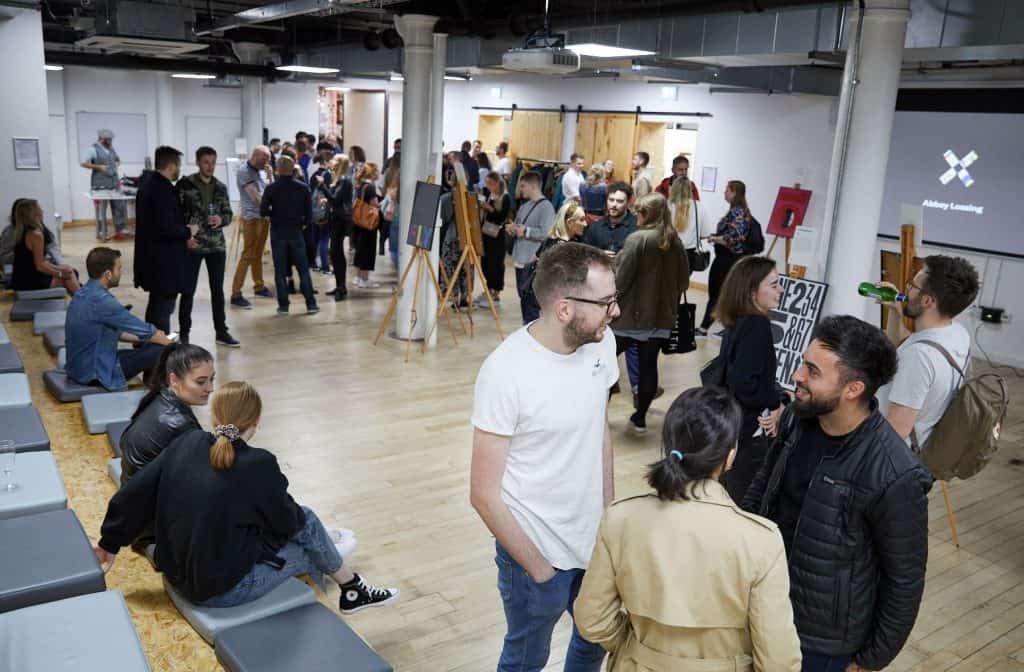
Stuart: We always advise artists who are setting up print stores to lead it back to your site and to build your email list, because that’s something that you are in control of. You can always have that conversation with the people who follow your work. And I think a lot of people also remember what happened with Facebook. I’ve got a friend of mine, an artist who had over a million followers and then literally overnight he couldn’t speak to any of them without paying. I guess that lives long in the memory, doesn’t it?
So I’m now going to spend a year creating repeated videos, which is really hard. Video is harder, there’s no doubt about that, because it’s more information and you’re having to create more information for social media. If you’re gonna spend a year, two years and you can build up to a million followers and then suddenly the shareholders of the social media sites say, we need to monetize this harder. Let’s make everyone pay. I guess there’s that danger of that happening again with TikTok. We’re certainly seeing that people can sell art on TikTok. But it is so much harder to create video content and edit it. Not even the file sizes but just the fact that you are having to create these narratives and these arcs. You can’t just put some pictures up of your work.
Katy: I think it depends on who you are and what your brand is. If I was a gorgeous beauty, who was an artist who lived out of a campervan and painted the most stunning landscape art of beautiful kind of beaches around, you know, the Southwest of England, I’d have a ton of natural kind of videos to film of myself, of what I was cooking for my dinner. You know, maybe I have a cute little dog as well, that might help. I sound really cynical, but the fact is, I’m a platform that shares other people’s work and supports the creative community to an extent because I’m doing that. I won’t get as much impetus as maybe an artist that’s promoting their own work, so to speak.
I think there is definitely a favor for that. For example, I’m a platform. I’m making money. So in Facebook’s eyes, they want me to pay to access my community. That’s fair enough. I’d prefer if they came out with a subscription model. That would be amazing. Give us a little bit more of that engagement that we had six or seven years ago. And now Instagram’s followed suit. But I just can’t bring myself to spend advertising money on a platform that I don’t trust. I don’t know if that money is actually going to reach anyone. Also, does it really meet Creative Boom’s original ethos?
We’ve deliberately kept the site as ad free as possible and built it very slowly over 13 years. Built the community first rather than splashing loads of ads everywhere making money. And that is so tough. So I think we just made the decision; No, we’re not going to, unless we do a partnership with a client who is advertising with us and they want to do something on social media. If we can possibly avoid it, we’re not going to do advertising on social media.
Do you remember in 2020 when everybody was doing these amazing videos on Instagram, these kinds of life talks, these Q&As, all this kind of stuff. I was just so overwhelmed. And I made the decision then, I’m not gonna do any of this with Creative Boom. I’m not gonna record podcast videos. I’m not gonna do any of that. I’m just exhausted by it. If I’m exhausted by it, there’s gonna be a lot of people out there who are also exhausted by it. And the last thing I wanna do is cause any anxiety or make people feel like we’re just pushing out all this content for nothing.
There’s always a decision behind every reason why I don’t decide to do something. Whether it’s right or not, I don’t know. But I’ve kind of proactively avoided video up until this point. Maybe season five of my podcast might be recorded video wise, but we’ll see. It just doesn’t sit well with me. I just think I prefer the voice and the platform of words. I think it’s nice to have those things, but then, I could be wrong.
Stuart: How do you think that translates for individual creatives? For example, I go onto Google and I type ‘creative industry projects’ or ‘creative industry news’. Obviously Creative Boom is gonna come up quite highly on that because you are a platform and you are creating so much content that it is actually really friendly for the search engines. Whereas for an individual, if you Google ‘illustrators London’, what are the chances of an individual creative getting onto page one, unless they’re just spending all their time creating content.
I’ve actually read a stat that if you create content natively on social media, that means you actually use their creative tools, then you are six to seven times more likely to go viral with that content than if you are creating it off there and uploading a video. So do you think it’s maybe more relevant for the individual creative to be doing the social media side of things? Or would you say that that’s too high risk for them also? Because they might build up this huge following and then the algorithm changes and their business disappears overnight.
Katy: Yeah. It’s very frustrating. I’ve seen a lot of creatives who have relied on Instagram, for example, see their engagement drop off overnight. And they’re figuring out what to do next. Some are talking about TikTok. Some are talking about going back to more traditional roots like starting a newsletter or integrating a blog on their website.
We’re talking about self-promotion; if you concentrate on building your own content on your site, and when I say that, I mean, have a blog that isn’t separate from your domain. Have one that’s actually integrated into your site so that every time you create a blog post, you’re creating a new webpage that says to Google, hey, my website’s got new content. Come and crawl me. I’m important. So every time you do that you imagine you’re sitting in a fishing boat in the middle of a lake. And every time you write a blog post, you’re putting in another line to catch the fish, if that makes sense. So make sure you’re always doing that. Make sure you have a newsletter where you can share those blog posts and updates, and then just use the social media platforms to share that content too. And keep people abreast of what’s going on.
Just know that at some point things may change. But if you’ve always got that blog and if you’ve always got that newsletter, the vehicles in which you share what you are doing, yeah they might change. They might get more difficult to share your message, but there’ll always be other things you can rely on. LinkedIn, for example, is the place to be. LinkedIn is fantastic. Hashtags work there. You can follow as many people as you like. You don’t necessarily have to connect with them. You can share your work, and people interact with it.
We have great success with Creative Boom on Linkedin. We’ve built up to about 45,000 followers there. I never really had a huge focus on LinkedIn. But just three or four years ago I started to focus on it a lot more because things were changing elsewhere. And a lot of people I speak to are saying the same thing. Okay, so Instagram and Facebook are not really working anymore. Twitter’s a toxic place. Let’s have a go with LinkedIn. So I don’t know. You’ve just got to adapt as things change.
You’ve got to remember that there are these three different types of channels: earned, owned and paid classic marketing. Your owned channel is your own stuff, that is your website and your newsletter. Your paid channel is some Instagram ads or whatever. And your earned channel is your PR and that’s what I would do.
But if you’re talking about how a creative gets on the first page of the search engine results, that is more difficult than ever. But there is a way to do it. I would just, again, go out there. There are so many resources. SEO is changing all the time. Go and learn SEO, go and find out what a meta title is and whether you need to update your meta description. See whether it helps to get listed on Google Places. There’s a fantastic resource called Moz.com. I think there’s free tools and guides on there. And they’re constantly on top of it. So they’re a good one to go to.
But yeah, it’s a lot of work and this is all I’ve done for the last 20 years. And so the reason why Creative Boom is on the first page of Google for various search terms is because I have been sitting in the middle of a lake for 13 years, and I’ve been throwing out a ton of hooks to catch the fish. And here we are. And that’s why most of my traffic comes through there.
Stuart: I think with SEO there are opportunities in the sense that the search has become more intelligent. We did a series of blog posts a year and a half ago about selling art on TikTok and that went straight to the top result on Google. It is actually interesting because earlier you said, when you submit your work to publications like Creative Boom, that you should have a focus, a hook. And I think that Google is becoming sophisticated enough that you can do the same kind of thing with SEO. People might Google something like what’s the best new social media platform I can sell on. And that’s how ‘Sell art on TikTok’ will come up, which is not a direct answer to the question, but it’s an intelligent answer to the question.
A few years ago people would just pay people to churn out content for SEO and we never did that because we thought look, good content is what is going to build your brand. And so I think you have to sit there and really think of what you want to say. The technology in the industry just keeps changing. It makes it easier and easier for people to create amazing creative content. So we’re now starting to see AI coming into the industry as well. Do you think that’s made it easier for creatives to create original things or is it made it harder because so many more people can actually pick it up and do it without learning all the skills that you had to have 10 years ago to do the same thing?
Katy: With DALL-E I think any creative who’s alive today should be very very worried indeed. This is like machine learning at its most fascinating. These are the most sophisticated computers on earth. This is AI. This is basically some machine that’s going to replace you at some point. And you can’t get around that. It will never ever replace humans. There’s something that we have that machines can never possess no matter how sophisticated or amazing they become.
Stuart: I see a lot of the AI tools making it easier to create amazing things. But what is creativity? It’s the human viewpoint. It’s the human experience, right? It’s the human philosophy. When people ask me about DALL-E, I say that would just be another tool to create your viewpoint.
I can go out and take fantastic photos with my iPhone. And I see some of the videos, for example, on Instagram reels, that are amazing. They look like really high quality production value. And yet I know they were shot on an iPhone. Does this make it actually harder for creatives to get noticed with their own creativity because now everybody can go out and create new things? Or does it just make it easier because you can translate your vision, your viewpoint a lot easier without having those big barriers to entry, having to spend thousands of pounds on a video production team to come along with you on your shoot to show behind the scenes video or something. Does it make it easier or harder?
Katy: I think that the easiest way to answer this is: with every revolution, with every bit of technology that disrupts industry, there is always gonna be people who get hurt and there’s always gonna be a learning process and there’s always gonna be a process of adapting. The internet killed a lot of fantastic publications, but inevitably like with all these things, it allowed the cream to rise to the top. So as creatives are coming across these new technologies, they can embrace them absolutely. But I think they are a threat. Anybody out there who is just doing mediocre work, something that an AI machine can do, they should be worried.
If I was a creative today, I would be thinking how can I build my skills so that I am indispensable? How can I become more of a consultant, go into companies and advise the board on how they can develop their branding or how they can improve their marketing communications overall. It’s about recognizing that if any of us are to survive in the next hundred years and have a job to enjoy, then we have to diversify. We have to be thinking about these other skills that we can use. For example, if you’re working in graphic design, could you learn SEO? Could you pick up some web development skills? I’m sure that the creatives that we certainly engage with on Creative Boom are smart and they know this and they know that they have to diversify and stay ahead of the game.
I think to be honest, quite a few of them are exhausted by all the disruption that’s been happening over the last few years and are a bit sick of having to have all these transferable skills. I can’t predict what will happen, but I just know that it always helps to branch out and spot opportunities for where your career could possibly go should the worst happen. And that’s kind of what any of us can do. I did it back in the early 2000s when I saw that radio was dying and I had to go into PR and marketing. I hadn’t got a clue what I was doing, but picked it up quite quickly.
With any technology, we just have to keep evolving and remember that a robot cannot go into a meeting room and recognize who holds the purse strings and who’s falling out with who and what politics there are in the room. Humans will always have the upper hand.
Stuart: I think adaptability is a key because when I started my career 30 years ago I remember being told, and this was big news at the time, that you will have to have about four or five career switches in your career. And that was big news because the people who were retiring when I started my career had done the same thing since they started their careers. Literally for 30-40 years they had done exactly the same thing.
So this year you might have to be an expert on video and TikTok, but then next year you might have to be an expert on something else. I think it’s that adaptability thing, isn’t it? You’re gonna have to learn all the time. I guess where your tips section comes in very handy because you have to keep learning new skills and it could be hard.
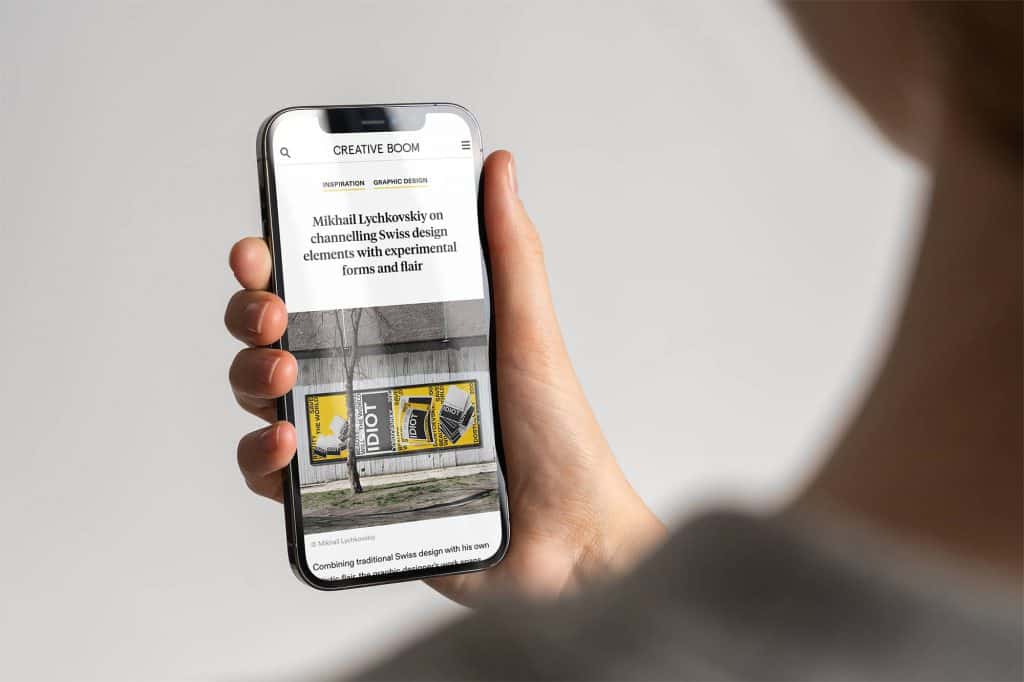
Katy: It is hard. And we’re constantly doing that too. There’s a new lesson every day. Whether it’s upgrading podcasting equipment or figuring out a new navigation bar or whatever kind of file we’re putting out that day. You just never stop. That’s how you survive. You’ve got to keep thinking about how you can improve. That’s not to say you have to work all hours and disrupt your work life balance. But yes, if you are gonna be a successful creative, then it does take a little bit of extra thinking about what thing can I do today to improve my portfolio? What press release can I start writing? Have I promoted that new project on Instagram yet? And should I consider creating a video for TikTok? That kind of thing.
It’s hard work really. It’s such a crazy but fascinating industry to be in. And if you love all that, if you thrive off the varying tasks, which I do. I’d be so bored if I didn’t have all these fires to put out every day. And if I was looking at the clock, which I never do. I relish the challenges of this ongoing technology and all these fresh things that are happening all the time. I relish the challenge of, okay this is new. Let’s see how we solve this. Or is this something we should do? I dunno the gut’s saying no, but we could be wrong. I mean, we were kind of wrong with Instagram. We kind of didn’t bother at first so I could have way more followers by now if I’d invested a bit of time into Instagram 10 years ago. But yeah, you just gotta try and do your best and hope that it all works out.
Stuart: One of the things we recommend with creatives is to explore collaborations. So let’s say you’re an illustrator and you want to do some 3D animations, or something in virtual reality or augmented reality. We recommend that you find people who have those complimentary skills and you get together and you collaborate on those projects. For example, with yourself and your own story, you had the desire to write and surface all these stories and projects for creatives and your husband was a software developer who could help you to make the first steps.
So where can people go and find these collaborators to work with? Obviously you can find them when you’re at university, when you’re at art college but once you’re out in your career, where are good places to go and find people to collaborate with?
Katy: I think you just gotta get out there. A lot of the success that some of my friends have had in Manchester have been purely by having a desk space or an office in a building where a lot of creative people are. There was a lovely building that we were in for a while called M One. And downstairs we had Stan Chow, the famous illustrator who works for The New Yorker. We would sometimes see him coming back from lunch with a bag from KFC. Very funny chap, love him to bits and is very talented. And then we had Dani Molyneux upstairs. She runs her own graphic design studio. She’s a graphic artist. So many people! You create this little hub, this creative community. So my advice would be to get out there. And if you can’t afford a coworking desk somewhere or an office, then there are so many events happening locally. Just go to those and be friendly and get chatting to people. If you go to them on a regular basis, you’ll see the same names again and again. Creatives don’t tend to switch off, right? They love going to workshops and design talks and new exhibitions. They’ll be a friendly face that you start seeing more and more. And then it’s a case of saying you fancy going for a coffee.
We have literally been in our homes for such a long time. We forget how effective it is to get out in the real world and do things in real life and meet people. We’re human. We need connections. I touch people’s arms. I’m terrible. I do that all the time and I love it. And now I’m kind of, can I still do that? So I’ll go in and just touch their forearm just gently and move it away and say hello. And it’s great. It’s great to be back out. There is nothing like human interaction to build contacts. You get talking, you say, oh, well, I’ve got this project that’s going on and I’m a bit stuck. And, oh, that’s interesting. My friend over there, have you met him? Here’s Jim, come Jim, come and say hello, meet Katy. That’s how it happens. Unfortunately, there’s no magic wand. You have to get out and meet people. You’ve gotta go to these events, rent desks somewhere. It’ll all just start to sort of naturally come about. And I think that’s how the best collaborations happen anyway. That’s certainly been the case for me.
Stuart: Yeah, absolutely. There’s an element of randomness that creates new things and brings people together, who wouldn’t normally seek each other out maybe.
Katy: It’s about making friends essentially and realizing that you can all help each other out. I’m gonna be doing a few things locally here in Manchester this year, which I’m really excited about.
And I can’t talk about that just yet, but that’s come about from that M One one time when you brush shoulders with all these interesting people. It’s funny how everybody stayed in touch as well from that building. Some are now in London, some have moved to Bristol, but we’re all still in touch. I think we’re all on the same WhatsApp group. Facebook group. And so that’s what you’ve gotta do. You’ve gotta put yourself out there.
Stuart: So some live events are coming up. Well, that sounds exciting! Certainly need some more of those. So just to round off and thank you for your time, it’s been really enlightening. I just wanna ask the question: if you are starting out now, you haven’t gained a following, if you are coming from art college or maybe you are just making that leap from a job you don’t like into pursuing your creativity full time, how do you get started?
What advice would you give to someone, a creative who’s doing commercial work or an artist who wants to have exhibitions and sell work? How would you actually make those first two or three steps? What do you do?
Katy: I’d start a side project and I would do something that was really interesting, that was gonna get a little bit of attention from people, whether that’s likes and retweets or a feature in a magazine. Side projects are absolute gold because they also give you the opportunity to build up your portfolio. They allow you to build skills and they give you something to talk about.
When I used to go to networking events 13 years ago and I told people that I worked in PR, their eyes would just glaze over and they would fall asleep and probably move on to the next person. And I wouldn’t blame them. But when I told them that I had a side project called Creative Boom, which was all about the art and design community and supporting creatives, they could see that my eyes lit up and I was really excited about it. Then there was something to talk about, and then there was something that allowed people to follow you back. So do something. On the side that perhaps brings people together that you can collaborate with. Because then extra bonus, you make new friends, you build a little community and you give back. And then you’ve got this perfect storm. Because if you’re starting out with nothing and you’ve got nothing really yet to show, then you’ve just gotta make something that can fill that gap until you do have those other work projects to add in there, if that makes sense.
It depends entirely who you’re talking about, whether it’s an artist that’s a completely different thing, perhaps you’ve just gotta do the work in that case, paint the canvases, go and talk to galleries. But if you’re talking about illustrators and graphic designers and photographers, then start a side project. I know so many photographers who will take a theme and they’ll say, right, I’m gonna do a really lovely visual story on this very subject. And it might be something very current and very of the now, and that’ll get attention. People engage with it and they’ll get work from that and they’ll build contacts.
I could sit here for two hours and tell you what they could do, but if I can just give this one piece of advice, it’s – have a think about what you are passionate about and what you’d like to do creatively. Create that as a side project and just see what happens. You’ll be really really pleasantly surprised.
Stuart: Amazing. Okay. Well, thank you very much for your time today, Katy. That’s been, that’s been really fascinating and really enlightening.
Katy: Thank you very much. Thanks for having me.
